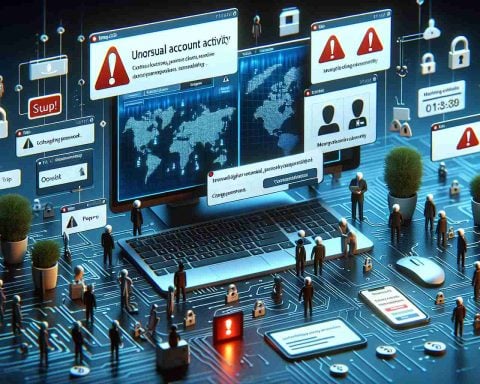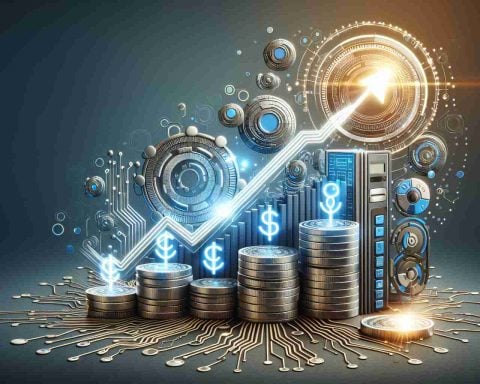Significant Challenges Loom for Battery Manufacturers
In a dramatic shift, South Korea’s top battery manufacturers are forecasting substantial losses for the fourth quarter, signaling a troubling trend in the electric vehicle (EV) market. Demand for EVs has stagnated, leading to a grim outlook for major players like LG Energy Solution, which disclosed a staggering operating loss of 225.5 billion won. This marks a stark contrast to the previous year’s profit of 338.2 billion won during the same timeframe, with a deeper underlying loss once accounting for various credits.
Other key firms in the sector, including Samsung SDI and SK On, are also bracing for potential losses in this challenging environment. Analysts identify a “triple threat” of weak demand, oversupply, and policy uncertainty as contributing factors to this downturn.
Additionally, fierce competition from Chinese manufacturers such as CATL and BYD, who are efficiently addressing oversupply through exports, adds to the pressure on South Korean firms. The potential return of Donald Trump to power raises concerns among industry experts regarding the future of battery support measures, heightening the uncertainty further.
In light of these challenges, South Korean battery makers are tightening operations and shifting strategies. LG Energy Solution has activated crisis management protocols, while SK On is implementing voluntary retirements. Leaders have highlighted a commitment to technological advancements and diversification as essential strategies to navigate these turbulent times. Their focus in 2025 will shift towards broader applications and energy storage solutions beyond just electric vehicles.
Shifting Strategies: South Korea’s Battery Manufacturers Combat New Market Realities
As South Korea’s top battery manufacturers face a steep downturn, the landscape of electric vehicle (EV) battery production is undergoing profound changes. Major players such as LG Energy Solution, Samsung SDI, and SK On are grappling with substantial financial challenges, and this article explores the emerging trends, strategic shifts, and the broader implications for the industry.
Industry Outlook: Key Trends and Insights
1. Market Dynamics: The stagnant demand for electric vehicles has triggered considerable concern within the battery manufacturing sector. With LG Energy Solution reporting an operating loss of 225.5 billion won for the fourth quarter, contrasting sharply with a profit of 338.2 billion won from the previous year, the industry is poised for significant recalibration.
2. Competitive Landscape: South Korean battery makers are increasingly contending with dominant Chinese firms, particularly CATL and BYD, which are navigating oversupply challenges better through strategic exports. This intensifies the need for South Korean manufacturers to innovate and streamline their operations.
3. Policy and Political Influence: The uncertain political landscape, particularly the potential return of Donald Trump as a key decision-maker, raises alarms about the continuity of supportive policies for battery production, leaving manufacturers in a state of heightened anxiety.
Strategic Responses: How Companies Are Adapting
# Pros and Cons of Current Strategies
– Pros:
– Crisis Management: Companies like LG Energy Solution are implementing crisis management procedures, aiming to mitigate losses and stabilize operations.
– Emphasis on Diversification: There’s a strategic pivot towards broader applications for battery technology, with a focus on energy storage solutions beyond electric vehicles, which could open up new revenue streams.
– Cons:
– Short-term Losses: Immediate financial setbacks could impact research and development funding, stalling potential innovations.
– Workforce Adjustments: Strategies such as voluntary retirements at SK On may lead to talent shortages, which could hinder growth.
The Way Forward: Predictions and Innovations
Manufacturers recognize that adapting to these market realities will be critical for survival. Industry experts predict that:
– Technological Innovations: Companies will likely invest heavily in R&D to develop next-generation batteries, emphasizing energy density, life cycle sustainability, and cost-effectiveness.
– Sustainability Focus: Increasingly, firms will prioritize environmentally sustainable practices, influencing sourcing and manufacturing processes to meet global regulatory standards.
Limitations: Challenges to Overcome
Despite these proactive strategies, South Korean battery manufacturers still face significant hurdles:
1. Supply Chain Disruptions: Constant fluctuations in raw material availability can impede production timelines and increase costs.
2. Regulatory Landscape: Navigating compliance with evolving environmental regulations poses ongoing challenges.
3. Global Economic Factors: Inflation and geopolitical tensions can affect market demand and operational costs.
Conclusion
As South Korea’s battery manufacturers confront unprecedented challenges in a shifting market, their ability to innovate and adapt will be paramount in determining their future. By embracing new technologies and diversifying their product offerings, these companies aim to not only survive the current downturn but emerge stronger in an increasingly competitive global landscape.
For more information on the latest trends in battery manufacturing and electric vehicles, visit Battery Industry News.












